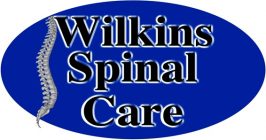WHISPERS OF WELLNESS: EMBRACING THE BENEFITS OF PASSIVE CARE
When a patient gets hurt, the doctor must determine the right course of treatment based upon clinical findings. The type of treatment, the length, and the frequency of care patients receives is determined by the type of injury and the severity of the injury. In many circumstances, an injury is so severe that doctors must break the treatment plan into two phases care: passive care and active care. In this week’s blog, we will explain what passive care is, and discuss what we can do to help.
What is Passive Care?
Passive care is a form of therapy performed by the doctor and not the patient. In other words, the patient is stationary and is not activating any muscle activity. Passive care occurs during initial treatment until the patient is ready to transition to the active phase of care. However, passive care is performed in both acute and chronic phases of pain.
The big question is, why can’t patients go directly into the active phase of care? In many circumstances, they can, but imagine someone breaking an arm. Do you think that it’s a good idea to have the individual start moving the arm and doing exercises immediately? No. The doctors are going to start with passive care by casing the arm for a few weeks. Once the cast is removed, the patient will then begin active care to help remobilize the arm and reeducate the muscle tissue.
Starting a patient on active care too early can do more harm than good because the body needs enough time for the healing process to create new tissue. During the healing process, the body responds to an injury that brings inflammation to the injured area followed by recreation of new tissue to help remodel what was damaged. If active care is started to early, the body will constantly produce inflammation because the body is not given enough time for damaged tissue to be removed, and new tissue to be built.
So, when people ask about the importance of passive care, recognize that it is to help assist the inflammatory process and remove debris of damaged tissue so that new tissue can be replaced.
Different Types of Passive Care Modalities
Various types of passive care modalities are performed in different clinical settings. In this blog, we will focus on chiropractic and physical therapists’ settings. Below is a list of passive modalities routinely performed in a chiropractor’s or physical therapist’s office. We will discuss some different therapies on separate blogs.
- Infrared therapy
- Moist heat (ex: heat pack)
- Dry heat (ex: heat lamp)
- Cryotherapy (ice)
- Ultrasound
- Chiropractic
- Massage
- Traction
- Electric muscle stimulation
- Light therapy (ex: laser)
- Hydrotherapy
- Aquatic therapy
- Passive range of motion (ex: stretching)
What Can We Do to Help?
Did you know that chiropractors have a license to perform passive and active care therapeutic modalities? It’s called an adjunctive procedures license. We can’t perform everything that a physical therapist does, but the license gives us the ability to perform many of the therapies listed above. Chiropractors commonly perform infrared therapy, cryotherapy, ultrasound, traction, electric muscle stimulation, light therapy, and passive range of motion exercises on patients.
Also realize that chiropractic care is considered a passive modality. When a patient is getting spinal manipulation treatment, they are not moving. The doctor is performing the entire treatment without patient help. There are some chiropractic techniques that require patient involvement, but most techniques are considered passive treatment.
At our office, we provide infrared therapy (dry heat), ultrasound, electric muscle stimulation, and non-surgical spinal decompression. Yes, you heard correctly. Our spinal decompression program is considered a passive form of treatment. The patient simply lies on the table while the table performs the treatment. Ironically, our neuropathy program is also a passive form of treatment. The patient sits while the leads and electrodes shoot therapeutic electricity into the body.
Staying up to date on the most efficient equipment and research is a priority for us as doctors because it is our duty to serve patients. Our decompression and neuropathy programs utilize equipment that is highly researched and numerous studies performed. If you would like to learn more about our decompression or neuropathy programs, please visit our website at www.drlarrywilkinsspinalcare.com and look at our previous blogs.
For more information or questions about passive care treatment, please call us at (724) 547-3377 and view our website at www.drlarrywilkinsspinalcare.com for more content.
Yours In Health,
Larry E. Wilkins, DC
Brian M. Steinert, DC

